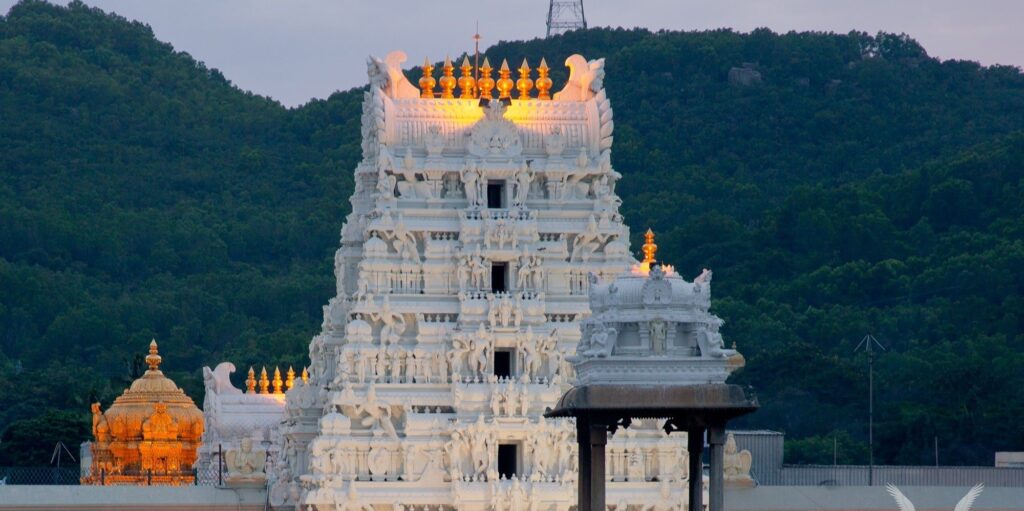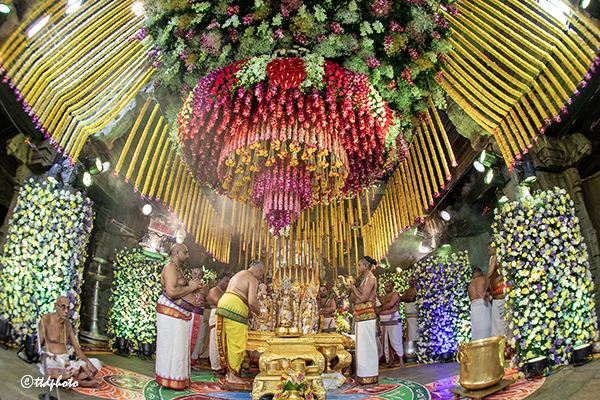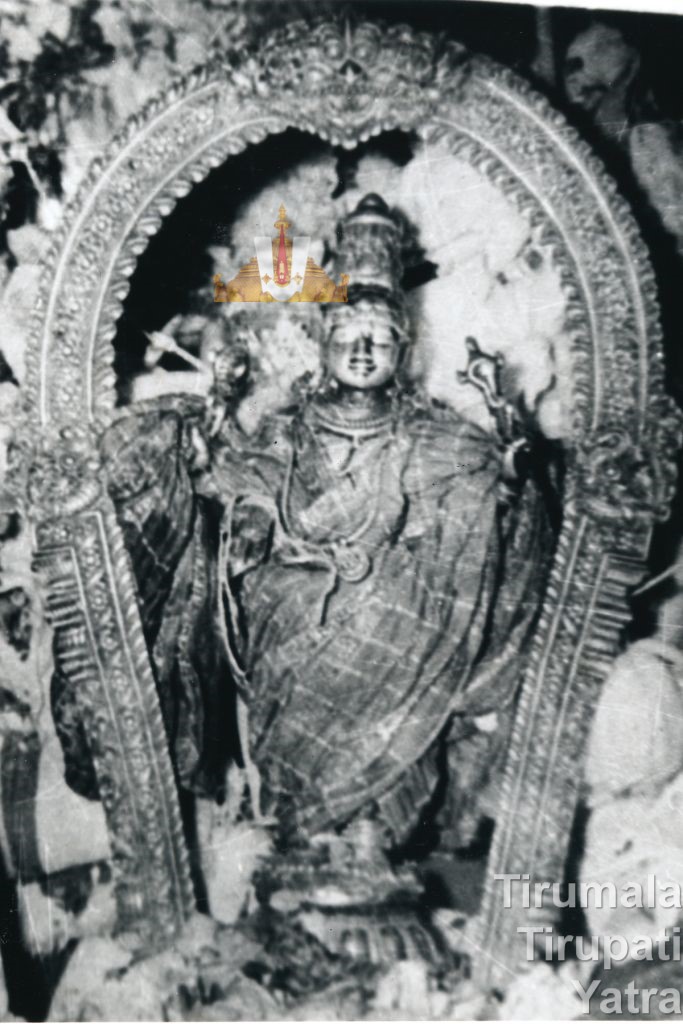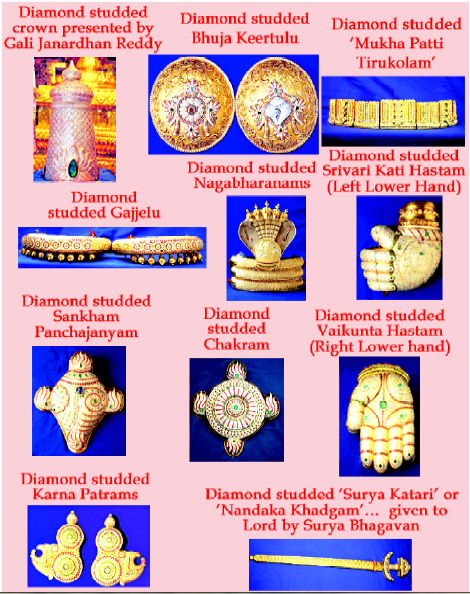Article by – Sri T.K. Krishnaswami Thathacharya
Peculiar Terminology
Our ancient Hindus tried to focus the infinite powers and attributes of the invisible divinity in a visible image for ministering to our spiritual welfare.
The Mahabharata (Mausala Parvam Chapter – V) states the origin of image worship. It is unknown when the Lord came to have a birth on the Vengadam Hills of His own choice (Svayam Vyaktam). The Lord’s attractive magnetic smile with coral lips of imposing image form seems to have been there from an unknown date.
This temple of Lord Venkateswara existed centuries ago and was administered by Chola, Pandya, Marathas, VijayaNagara kings, the British Mahants and other local chieftains from time to time.
During the rule of each dynasty, the names of the departments in the temple and administration changed according to the language used. It is interesting to note that the names of different departments in the Temple of Lord Srinivasa were also in vogue during the period of different rules.
The following are the interesting names.
Tirumalai
This was used by the Tamil kings and Alwars for Tirumala.
Tiruvengadam
This was used by the Tamil kings and Alwars for Tirumala
Tiruvengadamudayan
This was used by the Tamil kings and Alwars for Lord Venkateswara.
Azagiya Manavala Perumal
This was used by the Tamil kings and Alwars for Bhoga Srinivasa murthi.
Periya Perumal
This was used by the Tamil kings and Alwars for the Main deity.
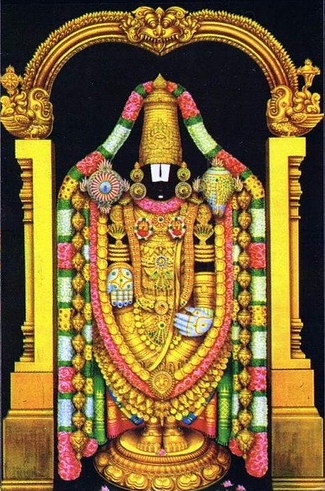
Vaga padi
A place where Naivedyam is prepared in Tirumala.
Tiruppani Bhandaram
Engineering Department of the temple.
Sri Bhandaram
Finance Department of the temple.
Sabhairs
Committee Chosen by Kings for the temple.
Sthanikaars
The local people who are interested in doing the service of the Lord.
Bokkasam
A place to keep and maintain the silk clothes of the Lord in safe custody and ornaments (Jewellery) and also keeping the records of the Tirumala temple.
Sabera paricharaka
A person to keep all the vessels belonging to the Lord in safe custody and daily keeping them. He has to prepare sandal paste, for the Friday Abhishekam and mix it with the parimalam to the Lord. For the daily Darshan in the early hours, he has to keep the vessels for the pooja.
He has to bring the cot of the Lord to the Sayana mandapam during (Ekantha seva) night and has to take it back the next day.
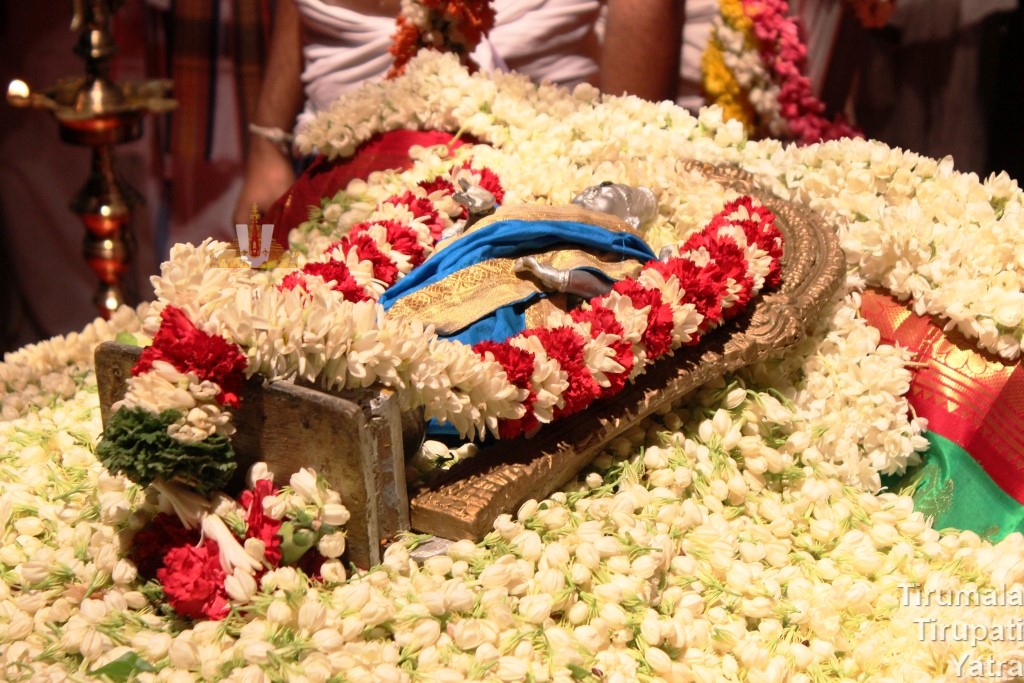
He has to prepare the Taambulam (a mixture of betel leaves and nuts). He has to distribute the prasadams — as per the custom and usage. In his work, the Bokkasam attendants also have to participate. The silver / gold umbrella is to be taken out during utsavam behind the Lord.
Peishkar
Once upon a time, the peishkar was the only person in Tirumala looking after the temple and other departments. The name was used and started by the mahants. He was in charge of the Temple routine and supervision of the temple departments. Nowadays, the Assistant Executive Officer in the Tirumala temple is called as ‘Peishkar’.
Uttara Parpatyadar (or) Parupathyadar
He has to maintain the temple routine of the temple and inform the officers and Jeeyars about it.
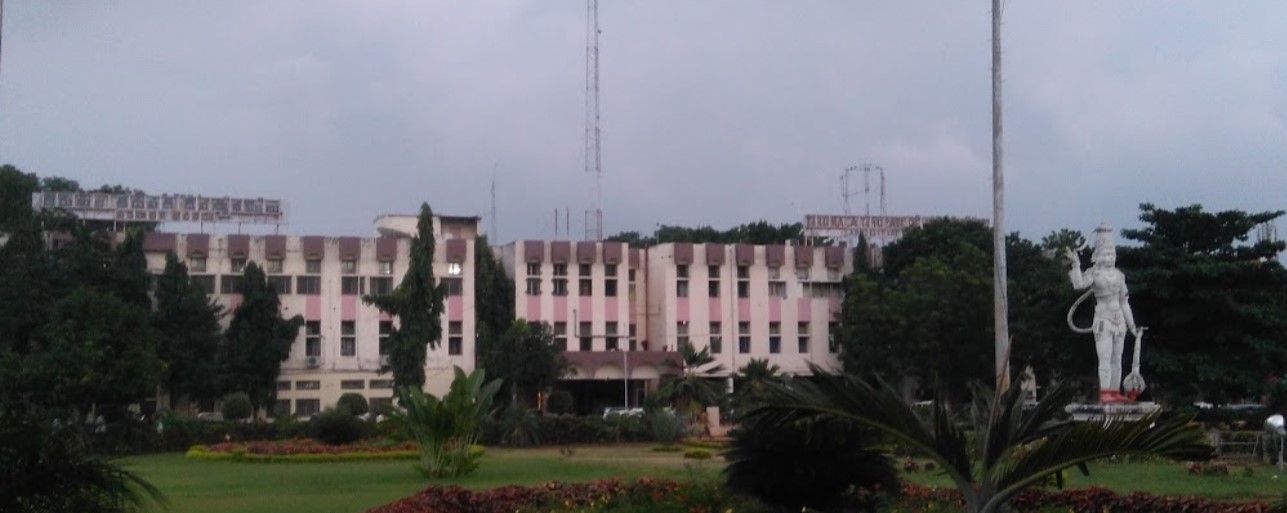
Huzoor office
In those days, the TTD Administrative Building is known as Huzoor office.
Deepali
Sanitary workers/sweepers etc. in the temple are called Deepali.
Ghantapani
His job is to clean outside Kulasekharapadi and ring the Big Bells during Naivedyam every day and carry a flaming light used as a big torch in the temple.
Nityakatla
Daily utsavams in the temple. click here to explore Daily Utsavams
Varakatla
Weekly routine utsavams in the temple. Click here to explore Weekly Ceremonies.
Pakshakatla
Fortnightly utsavams in the temple.
Masakatla
Monthly utsavams in the temple. Click here to explore.
Salakatla
Annual utsavams in the temple.
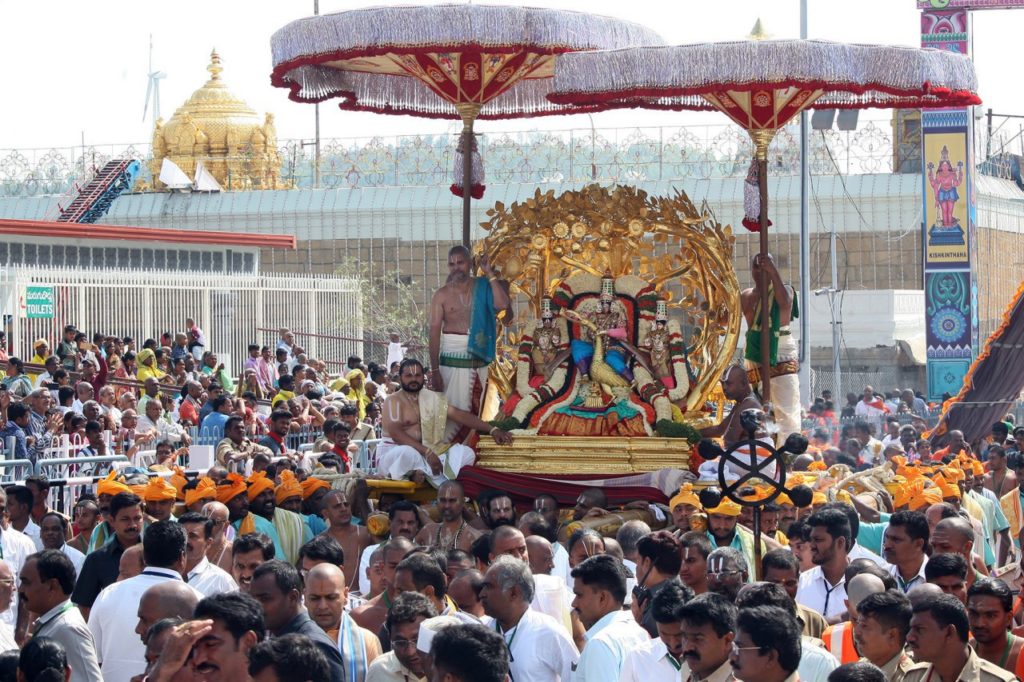
Chandana paani
This person is to bring clean clothes properly to the Moolavirat (Main deity) to be offered to the saalagramas and the holy feet of the Lord. He has to prepare sandal paste daily for the Lord.
Padikavali – Mahadwaram
The main entrance of the temple is called as ‘Padikavali’.
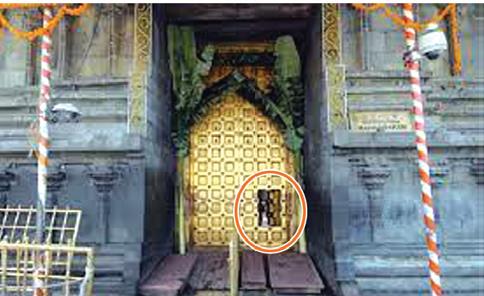
Jiddu
The small doors of the main entrance (Mahadwaram) in the temple.
Dafedar
Chief peon of the temple.
Navbhatkaana
It is a north Indian Drum. The music is played in mornings and in evenings in the Tirumala temple by this instrument.
Pounji (Diviti)
A Lighted long torch lamp held by hand. A flaming light.
Parakamani
A place where the Hundi offerings of the pilgrims are counted.
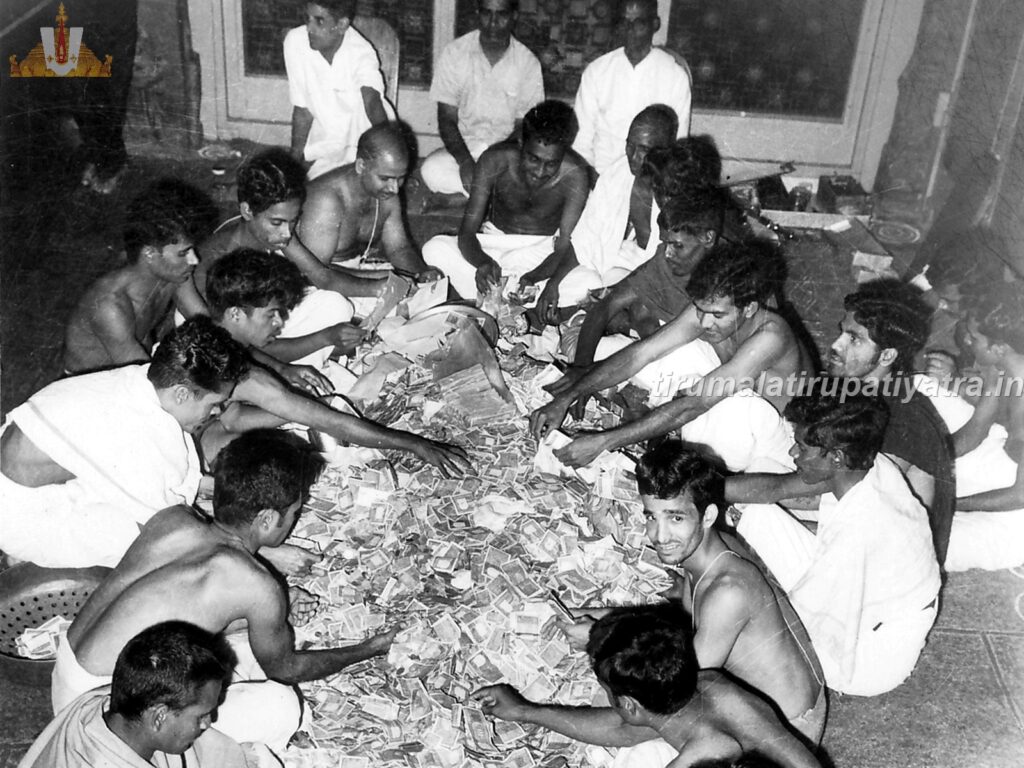
Mahathaadulu
Office attendees in the temple.
Jam Ghanta ochi
A person beating the bell with his hand while going in front of a procession during harati time.
Mafi cherapulu
Asking for forgiveness or praying by Archakas to pardon any mistakes done during Aradhana or otherwise. It is called as Padaseva.
Kaikaala Reddy
A person to tie the curtains and remove them and to bring the keys from Jeeyangar Mutt. He is also vahana bearer.
Japra
A Mixture of Sandal powder, camphor (white) and Kumkuma puvvu (saffron).
The above are the important and daily used terms in Tirumala Temple according to the custom and usage.
Om Namo Venkatesaya
